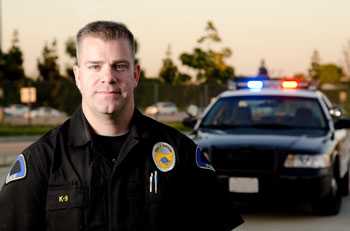Public Safety Program
Law Enforcement

NIOSH Resources and Publications
Safety and Health in Law Enforcement
NORA is a partnership program designed to improve occupational safety and health across the nation. Law enforcement agencies and organizations are able to come together to collaborate on ways to reduce risks associated with personnel.
Ebola Information for Law Enforcement Professionals in U.S.
NIOSH Fact Sheet on how Ebola is spread, symptoms, and ways law enforcement personnel are able to protect themselves from risk of exposure.
Fentanyl: Preventing Occupational Exposure to Emergency Responders
Fentanyl is a powerful synthetic drug similar, yet much more potent, to morphine and heroin. Law enforcement personnel have a high risk of coming in contact with the drug, unknowingly from its many forms. Exposure can be quick and lethal.
Stress and Health in Law Enforcement
NIOSH Science Blog demonstrating how stress influences Law Enforcement Officers through the Buffalo Cardio-Metabolic Occupational Police Stress (BCOPS) study.
Law Enforcement Officer Motor Vehicle Safety
Motor vehicle incidents are the leading cause of on-the-job deaths for U.S. Law Enforcement Officers. NIOSH has made this webpage to inform LEO of fast facts, resources, and news on how to reduce these incidences.
NIOSH Motor Vehicle Safety Blog
Law Enforcement Officer Motor Vehicle Safety: Findings from a Statewide Survey This statewide survey included a random sample of 60 law enforcement agencies and nearly 1,500 sworn LEOs. Respondents were queried on a wide range of topics: motor-vehicle crashes and roadside incidents, seat belt usage, written motor-vehicle policies, and availability of occupational motor-vehicle training (frequency and type).
Take Charge of Your Safety In and Around Your Patrol Vehicle
Five simple things Law Enforcement Officers can do to keep safe in and around their patrol vehicle.
Indoor firing ranges are popular among law enforcement and recreational shooters because they offer protection from inclement weather conditions and can be operated around the clock under controlled environmental conditions. However, many firing range facilities lack environmental and occupational controls to protect the health of shooters and range personnel from effects of airborne lead, noise, and other potential exposures.
Some recent examples are:
- Department of Energy Range Design Criteria 2012
- Lead Management and OSHA Compliance for Indoor Shooting Ranges
Organizations
National Sheriffs’ Association
International Association of Chiefs of Police
Office of Community Oriented Policing Services – DOJ
National Criminal Justice Reference Service
Major Cities Chiefs Association
National Law Enforcement Officers Memorial Fund
Police Executive Research Forum
National Association of Police Organizations
International Law Enforcement Educators and Trainers Association
- Page last reviewed: January 4, 2017
- Page last updated: August 30, 2017
- Content source:
- National Institute for Occupational Safety and Health Office of the Director


 ShareCompartir
ShareCompartir